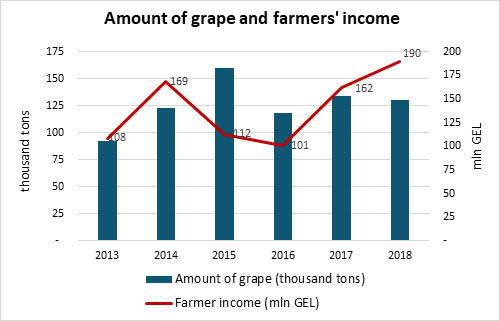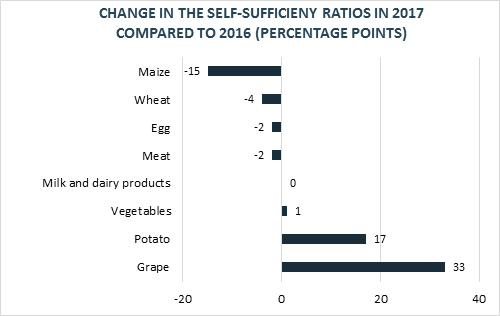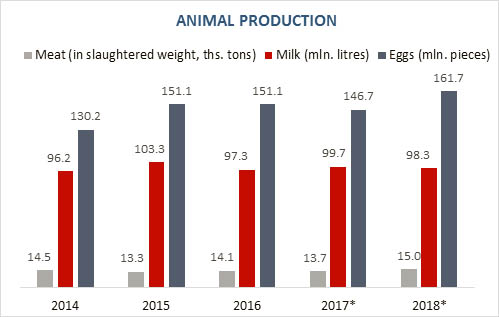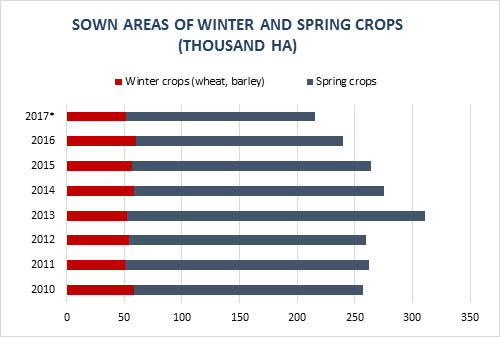- Details
Agricultural production has decreased by 0.8% in the second quarter of 2018 compared to the same period in 2017. In spite of decline in agricultural production, FDI in agriculture has increased. While FDI in agriculture is relatively low compared to the other sectors of Georgian economy, it should be noted that, agricultural FDI in the second quarter of 2018 reaches its maximum for the last three years.
Increased FDI is not the only good news for the sector, another one is related to “Rtveli”, which has started on August 20, and is not subsidized by the Government for the first time during the last ten years. This change in the policy is expected to lead to better quality wine and more competitive grape growers and wine producers.
- Details
There was 2.1% decrease in agricultural production in 2017 compared to the previous year. Production in the plant-growing sector declined by 0.4%, while animal production experienced a decrease of 3.8%. Lower production resulted in lower self-sufficiency ratios for most agricultural products.
Revenue from the sale of agricultural products in 2017 has also decreased compared to the period 2014-2017, both in percentage and absolute terms. Reduced production is the most likely reason for this result.
- Details
According to the data for the first quarter of 2018, the number of livestock has increased in Georgia. The biggest increase was observed for the number of sheep and goats, which increased by 35.9%. Such a sharp rise might be explained by the increased demand from East Asian countries. As to the other livestock categories, the number of bovine animals increased by 9.3%, while number of pigs and poultry increased by 7.7% and 4.1%, respectively.
The higher number of livestock has translated into increased animal production for most animal products, except milk, which decreased by 1.4% in the first quarter of 2018, compared to the same period in 2017. As to remaining categories of animal production, the amount of meat and eggs produced increased by 9.5% and 10.2%, respectively, for the same period.
- Details
2017 was a challenging year for Georgian agriculture. There is a decline in the level of sown areas, which decreased by 10.5% in 2017 compared to 2016. 214.9 thousand ha in 2017 is the lowest figure for the last four years. Average yields and production decreased for most crops, as well.
As to prices, from an annual perspective (March 2018 vs. March 2017), the prices of food and non-alcoholic beverages increased by 3.9%. The main driver was price change in the sub-group of fruit and grapes.
In March 2018, fruit and grapes became more expensive by 25.6% compared to March 2017. According to Geostat data, prices increased mostly for plums (60%), apples (41%), and tangerines (36%). Meanwhile, prices dropped for kiwi (-19%) and pears (-10%). In 2017, a spring frost followed by a summer drought created unfavorable weather conditions for deciduous fruit trees.














